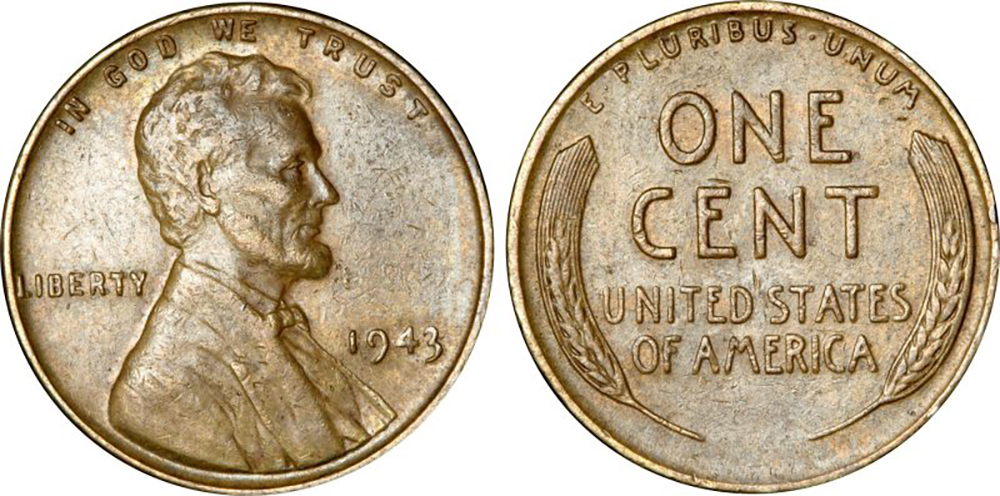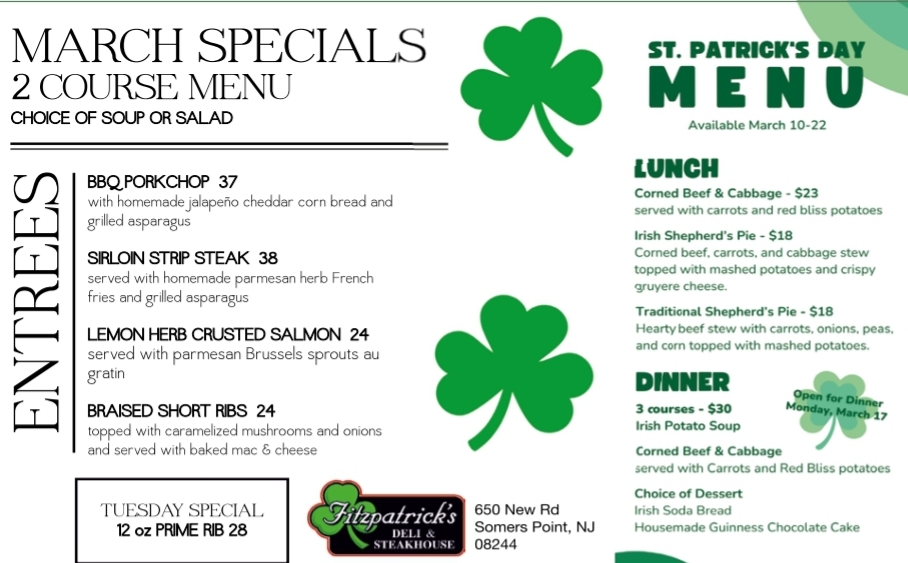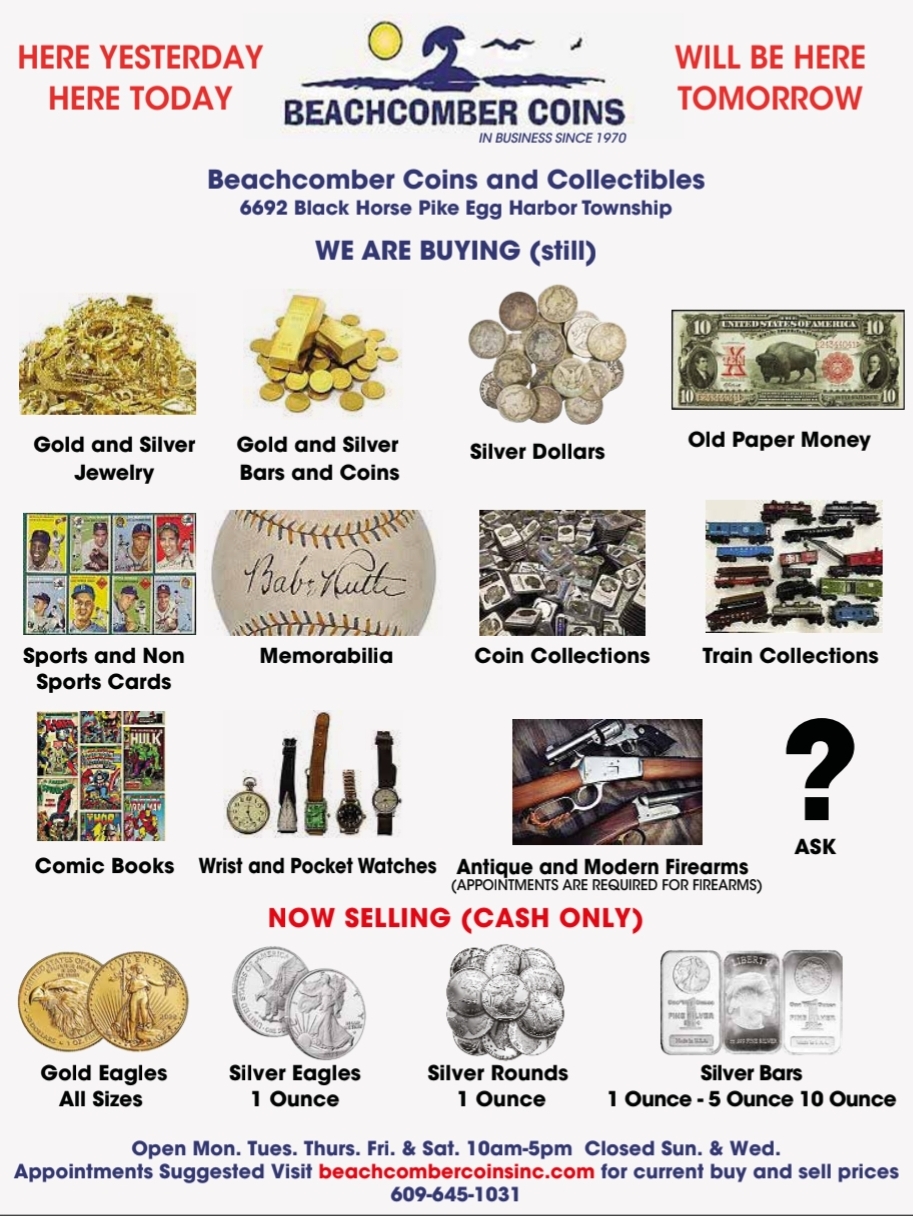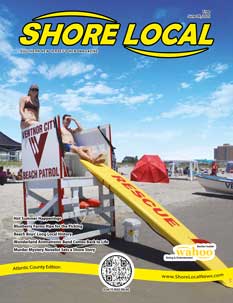Shore Collectibles
By Douglas Keefe
It seems that not a week goes by where someone with a 1943 steel (some call them silver) cent thinks they found a rare coin. Hopefully, this will clear up the confusion.
At the start of 1943, we had been at war for almost two years and all production was geared toward the war effort with many items including food and gasoline being rationed. Since copper was a key metal necessary for bullets and shells in artillery, it made no sense to use this metal to mint one-cent coins. Therefore, it was decided that all 1943 one-cent coins were to be struck using steel with a zinc coating. This was to be done at all three mints: the Philadelphia, Denver, and San Francisco mints.
Well, remember Murphy, the guy who created Murphy’s Law “anything that can go wrong, will”? While things didn’t actually go wrong, there was something that wasn’t expected or considered as to what effect it would have in the future. That was there were a few copper blanks left over from 1942 that were not minted into one-cent coins. Mint workers, not giving any consideration just threw those copper blanks into the minting presses along with the steel blanks. This occurred at both the Philadelphia and San Francisco mints. No one knows the exact number of copper blanks that were turned into 1943 cents, but it could not have been more than a handful since very few have surfaced after all these years.
If you think this was a one-time occurrence, think again because Murphy was still lurking in the mints. As a result of a major salvage effort, boatloads of used shell casings were recovered from the battlefields, shipped back to the states, and processed into material that could be used to strike one-cent coins. But, (there is always a “but”) in 1943, some steel cent blanks were left over and found their way into the minting process, resulting in a few rare 1944 steel cents.
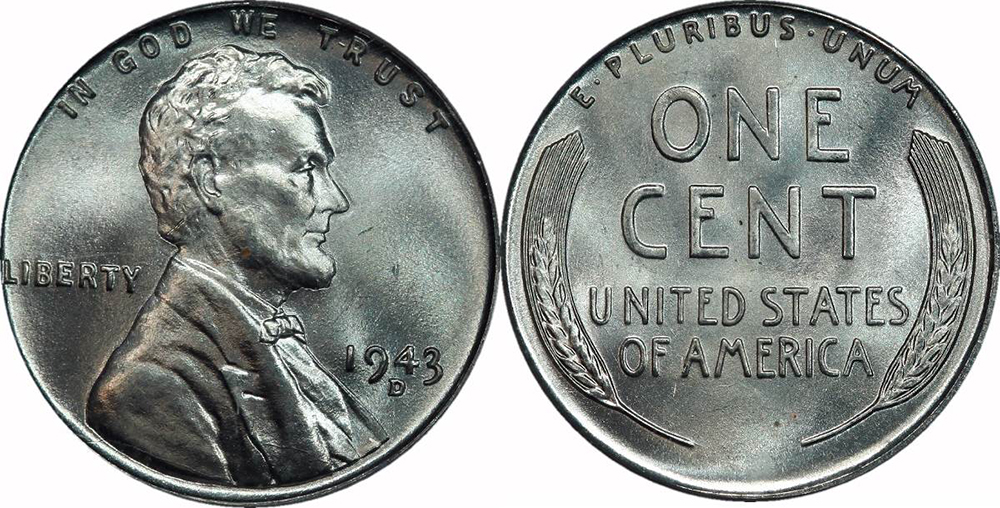
1944 Steel Cent
How rare is rare and what could someone owning one of these coins expect to receive? There is no guarantee, but valuations of plus or minus $100,000 depending on condition would not be unheard of. Now the question is “have they all been found?” to which the answer is “no one knows”, so if you are feeling lucky, grab a handful of copper and steel cents and check the dates.
Some dastardly people have gone to the extent of counterfeiting 1943 copper cents by copper plating steel cents, but this can be uncovered quickly because steel is magnetic, so a copper plated steel cent will stick to a magnet. Use a magnet when testing, do not do what someone did to the 1943 copper cent I once owned. They scratched it with a knife to show the coin was plated, which it was not. Also I have seen people take a 1948 cent and shave the front of the 8, but since the lower part of the number 3 on a 1943 cent slopes downward (see below), that attempt to fool is easy to see.
Douglas Keith is the President of Beachcomber Coins, Inc. He and his wife Linda operate Beachcomber Coins and Collectibles, formally located in the Shore Mall and now located at 6692 Black Horse Pike, Egg Harbor Township in the old Wawa building.


